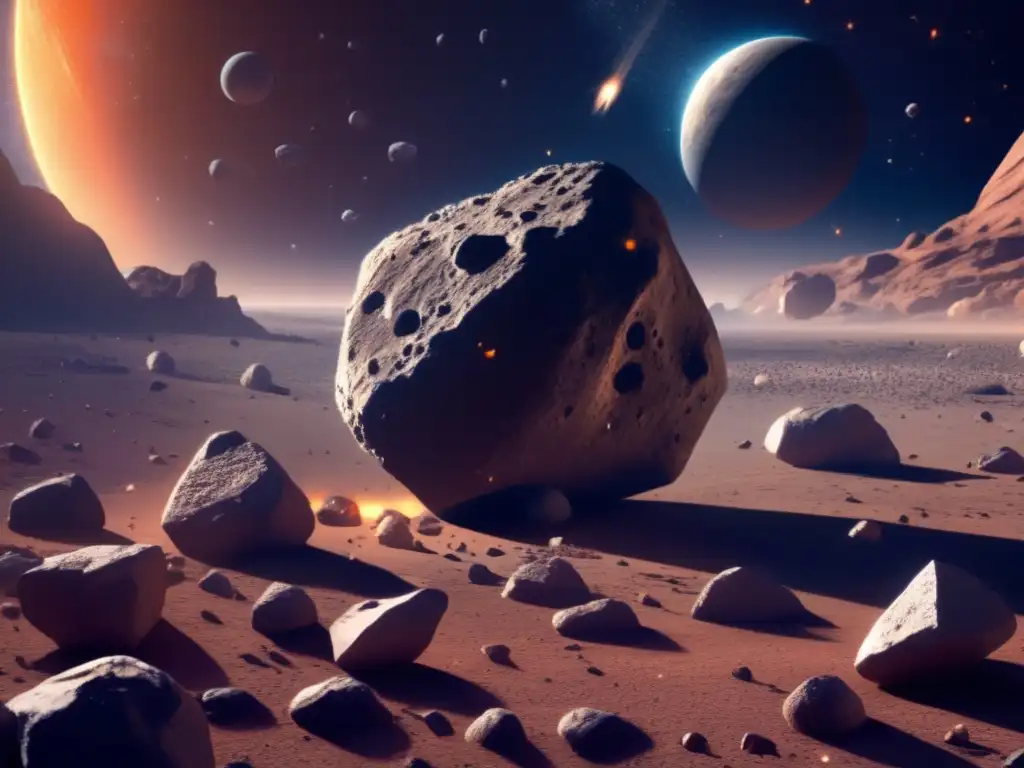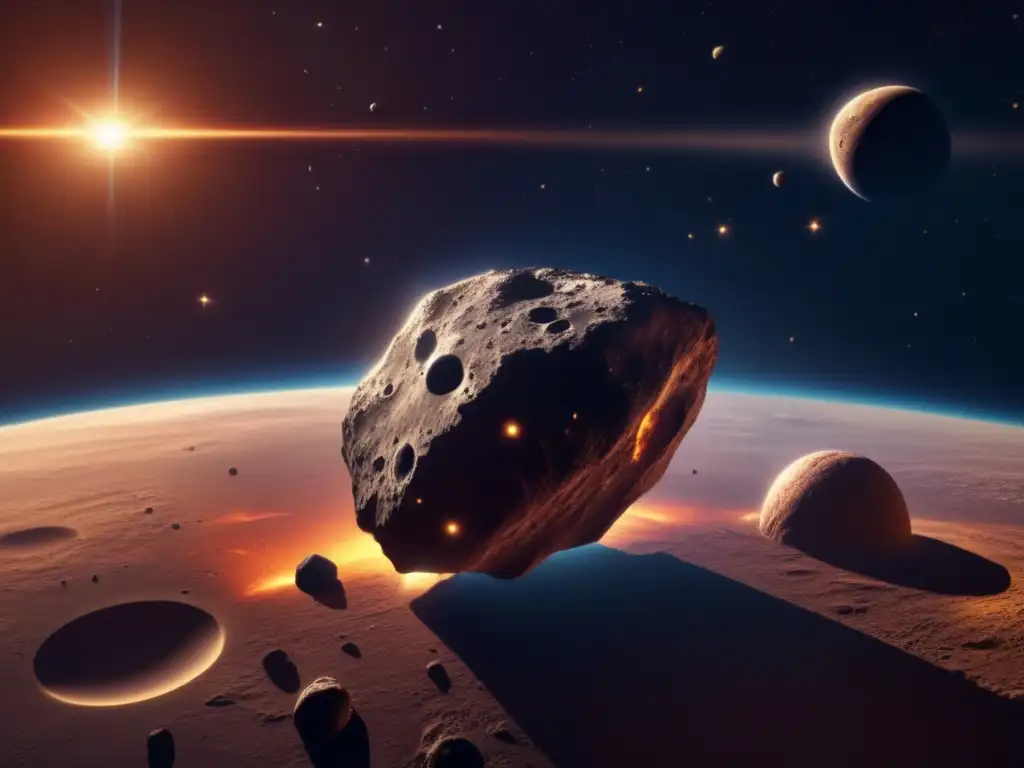Cosmic Commuters: Asteroids And The Transport Of Life

Introduction
The universe is full of mysteries that remain unsolved, but one of the most compelling questions has to do with the origin and evolution of life. Scientists have been studying the possibility of life beyond Earth for decades, exploring different planets, moons, and comets in search of clues that may help us understand how life began. However, there is another object in space that may be equally important in this quest: asteroids.
The Building Blocks of Life

Organic Materials on Asteroids
Asteroids are believed to be remnants of the early solar system, which means they contain primitive materials that date back to the time when planets were forming. These materials include organic compounds such as amino acids, nucleotides, and sugars, which are the building blocks of life as we know it. In fact, scientists have found evidence of organic materials on several asteroids, including carbonaceous chondrites and cometary debris.
Seeding Life on Planets
Asteroids not only contain the raw materials necessary for life, but they may also have played a critical role in transporting these materials between planets. Asteroids are known to collide with planets and moons, creating impact craters that can eject material into space. Some of this material may find its way to other planets, where it could seed new forms of life. This process is called panspermia, and it suggests that life may have originated on one planet and then spread to others via asteroids.
Extremophiles on Asteroids
Another intriguing possibility is that asteroids may harbor extremophiles, organisms that can survive in extreme conditions such as cold, vacuum, and radiation. Several studies have suggested that some microorganisms could survive for extended periods of time on asteroids, protected by a layer of rock or ice. If true, this would have important implications for the search for life beyond Earth, as it would expand the range of habitats where life could exist.
The Threat of Asteroid Impact

Asteroid impacts and extinction events
While asteroids may have played a role in the transport of life, they have also had a dramatic impact on the evolution of life on Earth. Large asteroid impacts are known to cause mass extinctions, wiping out entire species and leaving behind a layer of debris that can be used to date geological events. The most famous example of this is the impact that killed the dinosaurs at the end of the Cretaceous period, but there have been many other impact events throughout Earth's history that have shaped the course of evolution.
Mitigating the threat of asteroid impact
The threat of asteroid impact is real, but scientists are working hard to mitigate it. One approach is to track the orbits of potentially hazardous asteroids and develop methods to deflect them if they pose a threat. This could involve using spacecraft to nudge an asteroid off course, or even detonating a nuclear device to break it up. There are also plans to establish early warning systems that would give us more time to prepare for an impact event.
Opportunities for asteroid mining
Although asteroids pose a potential threat to Earth, they also offer unique opportunities for commerce and exploration. Some asteroids contain valuable minerals such as platinum, gold, and rare earth elements, which could be extracted and used to support space exploration and development. There are also plans to use asteroids as a source of water, which could be used for drinking, irrigation, and fuel production. These activities could help establish a more sustainable presence in space and pave the way for future colonization.
Frequently Asked Questions

-
Could life have originated on an asteroid?
It is possible that life originated on an asteroid and then spread to Earth or other planets via panspermia. However, this hypothesis is difficult to test and remains speculative.
-
How often do asteroids collide with Earth?
Large asteroid impacts are rare, occurring on the scale of tens of millions of years or longer. Smaller impacts are more common, but they usually do not pose a significant threat to human life.
-
Can we deflect an asteroid if it poses a threat?
Yes, there are several methods that could be used to deflect an asteroid, including kinetic impactors, gravity tractors, and nuclear devices. However, these techniques require early detection and careful planning.
-
How do we know what asteroids are made of?
Scientists study asteroids using a variety of methods, including spectroscopy, radar imaging, and sample return missions. These techniques provide information about the composition, structure, and history of asteroids.
-
What are the benefits of asteroid mining?
Asteroid mining could provide a source of valuable minerals and resources that could be used to support space exploration and development. It could also help establish a more sustainable presence in space and reduce our dependence on Earth's resources.
Conclusion
Asteroids have captured the imagination of scientists and the public alike for many years, and for good reason. They contain clues about the origin and evolution of our solar system, as well as the potential for life beyond Earth. While asteroids pose a potential threat to our planet, they also offer unique opportunities for exploration and commerce. By studying asteroids and developing methods to mitigate their impact, we can better understand our place in the universe and pave the way for a more sustainable future in space.
We hope this article has provided you with valuable insights into the fascinating world of asteroids and their importance for the study of extraterrestrial life. If you have any thoughts or questions, please share them in the comments section below. Don't forget to subscribe to www.asteroidrealm.com for more articles and updates on this exciting topic!
Additional Resources

If you are interested in learning more about asteroids and their role in the search for extraterrestrial life, here are some additional resources you might find useful:
- NASA's Asteroid Exploration Program
- Scientists Find Water on Asteroid Bennu
- Astrobiology Magazine: Asteroids, Comets, and Meteors
 The Cosmic Cocktail Of Life: Asteroids And Panspermia
The Cosmic Cocktail Of Life: Asteroids And Panspermia Interplanetary Hitchhikers: Microbes On Asteroids
Interplanetary Hitchhikers: Microbes On Asteroids The Asteroid Nursery: A Cradle For Life?
The Asteroid Nursery: A Cradle For Life?If you want to discover more articles similar to Cosmic Commuters: Asteroids And The Transport Of Life, you can visit the Asteroids and Extraterrestrial Life category.
Leave a Reply

Articulos relacionados: